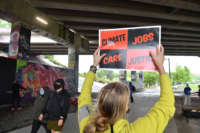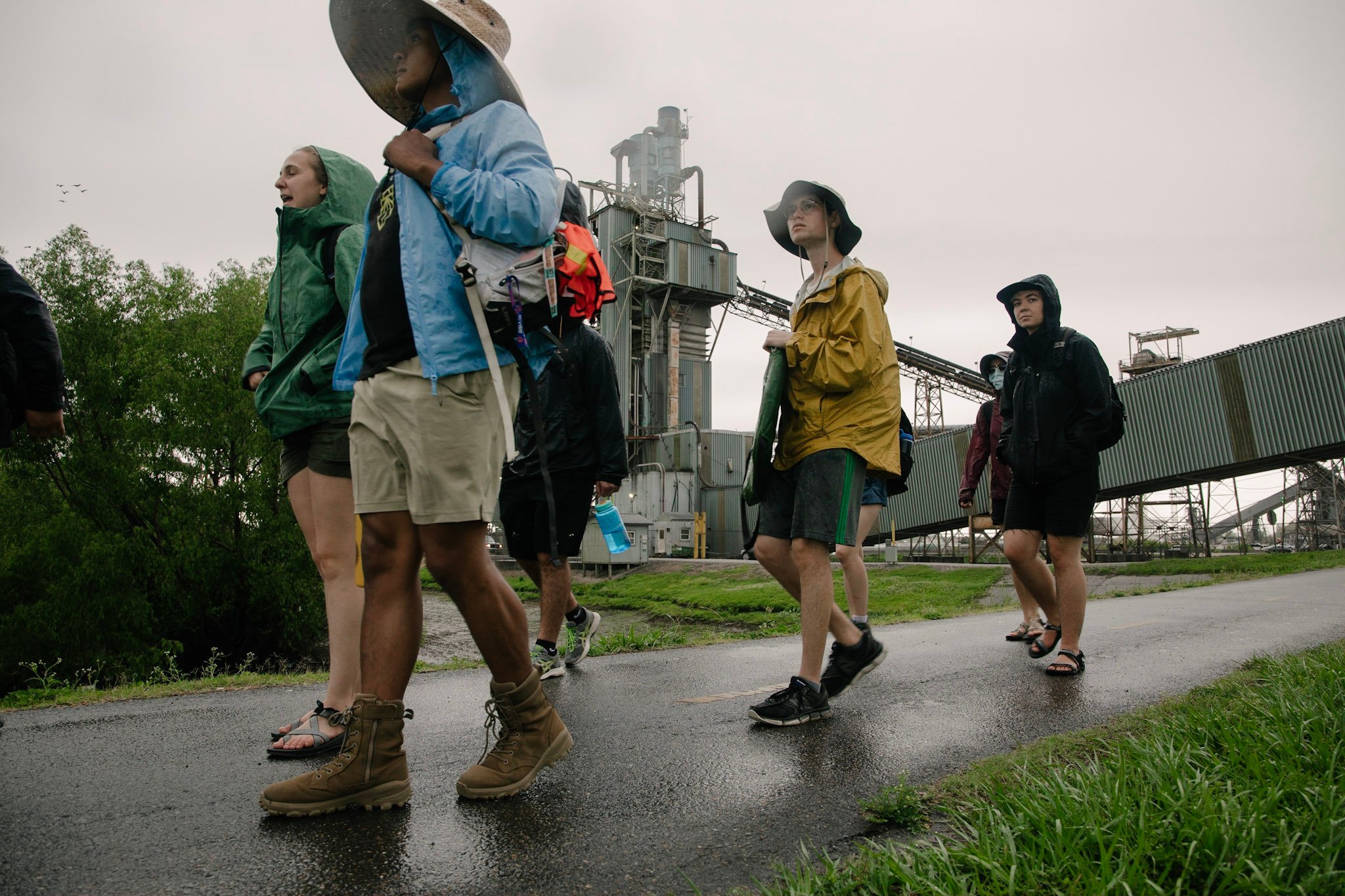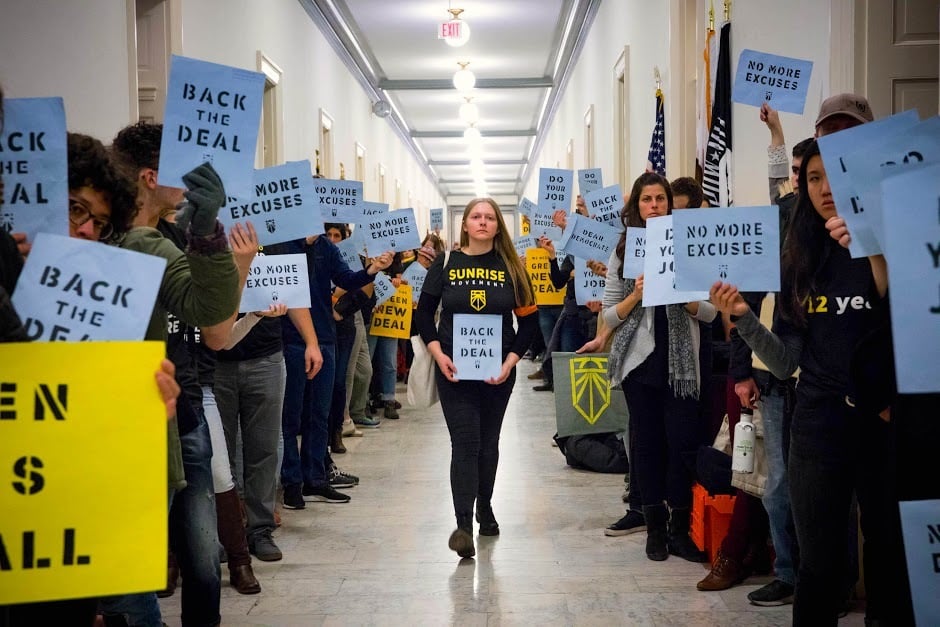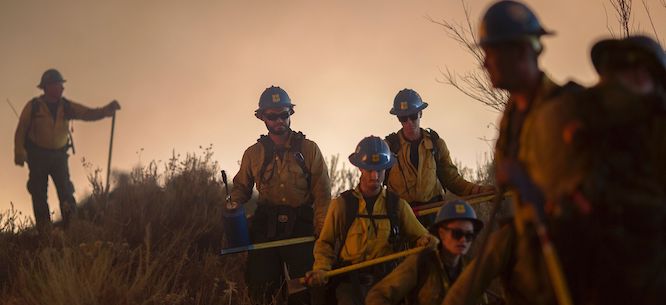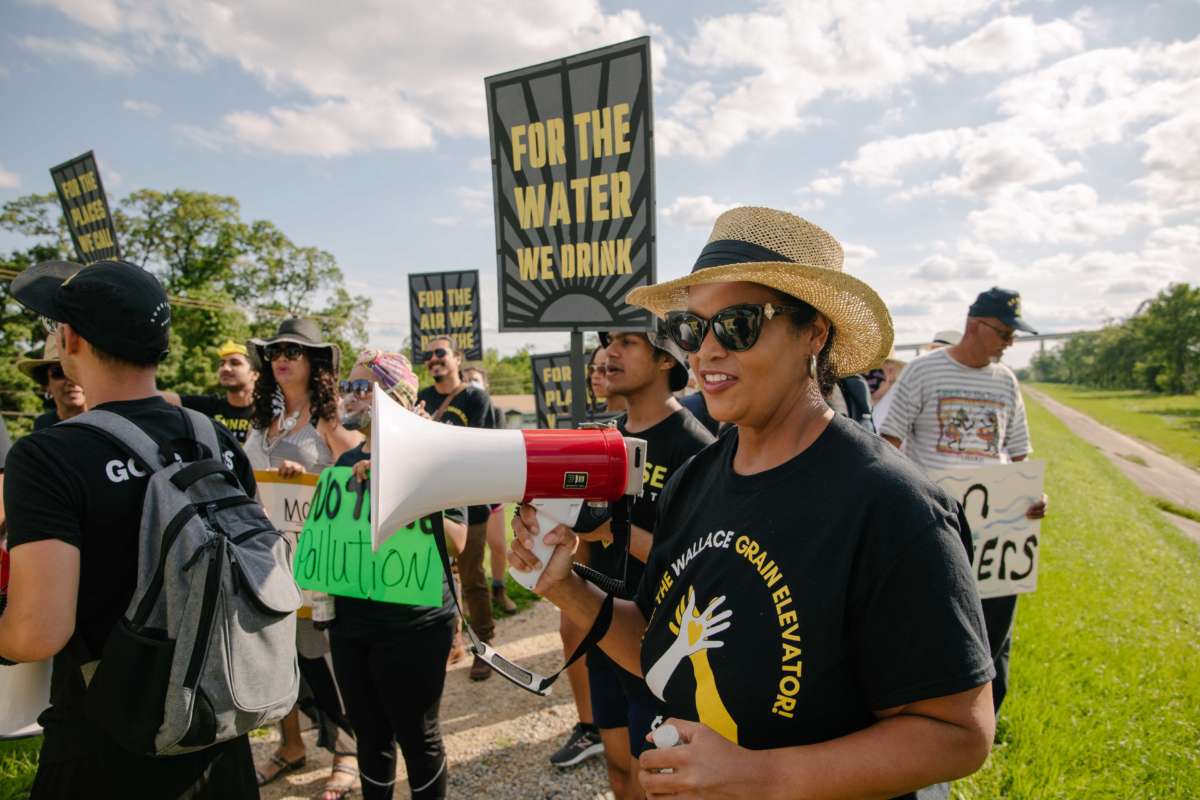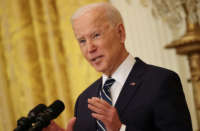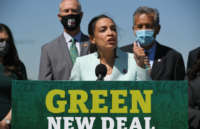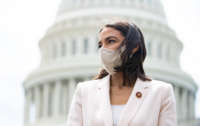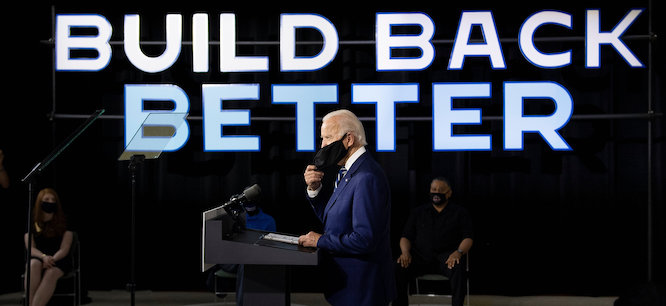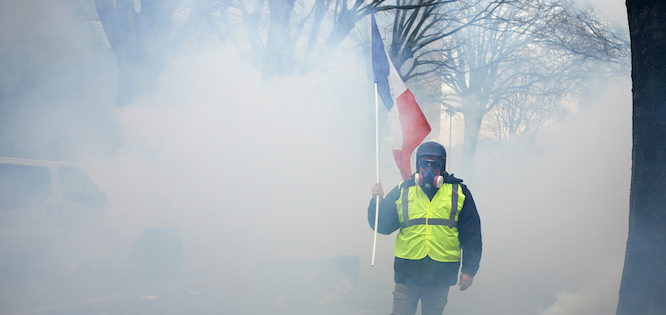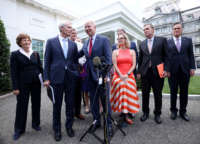
The U.S. political system is broken, many mainstream pundits declare. Their claim rests on the idea that Republicans and Democrats are more divided than ever and seem to be driven by different conceptions not only of government, but of reality itself. However, the problem with the U.S. political system is more profound than the fact that Democrats and Republicans operate in parallel universes. The issue is that the U.S. appears to function like a democracy, but, essentially, it constitutes a plutocracy, with both parties primarily looking after the same economic interests.
In this interview, Noam Chomsky, an esteemed public intellectual and one of the world’s most cited scholars in modern history, discusses the current shape of the Democratic Party and the challenges facing the progressive left in a country governed by a plutocracy.
C.J. Polychroniou: In our last interview, you analyzed the political identity of today’s Republican Party and dissected its strategy for returning to power. Here, I am interested in your thoughts on the current shape of the Democratic Party and, more specifically, on whether it is in the midst of loosening its embrace of neoliberalism to such an extent that an ideological metamorphosis may in fact be underway?
Noam Chomsky: The short answer is: Maybe. There is much uncertainty.
With all of the major differences, the current situation is somewhat reminiscent of the early 1930s, which I’m old enough to remember, if hazily. We may recall Antonio Gramsci’s famous observation from Mussolini’s prison in 1930, applicable to the state of the world at the time, whatever exactly he may have had in mind: “The crisis consists precisely in the fact that the old is dying and the new cannot be born; in this interregnum a great variety of morbid symptoms appear.”
Today, the foundations of the neoliberal doctrines that have had such a brutal effect on the population and the society are tottering, and might collapse. And there is no shortage of morbid symptoms.
In the years that followed Gramsci’s comment, two paths emerged to deal with the deep crisis of the 1930s: social democracy, pioneered by the New Deal in the U.S., and fascism. We have not reached that state, but symptoms of both paths are apparent, in no small measure on party lines.
To assess the current state of the political system, it is useful to go back a little. In the 1970s, the highly class-conscious business community sharply escalated its efforts to dismantle New Deal social democracy and the “regimented capitalism” that prevailed through the postwar period — the fastest growth period of American state capitalism, egalitarian, with financial institutions under control so there were none of the crises that punctuate the neoliberal years and no “bailout economy” of the kind that has prevailed through these years, as Robert Pollin and Gerald Epstein very effectively review.
The business attack begins in the late 1930s with experiments in what later became a major industry of “scientific methods of strike-breaking.” It was on hold during the war and took off immediately afterwards, but it was relatively limited until the 1970s. The political parties pretty much followed suit; more accurately perhaps, the two factions of the business party that share government in the U.S. one-party state.
By the ‘70s, beginning with Nixon’s overtly racist “Southern strategy,” the Republicans began their journey off the political spectrum, culminating (so far) in the McConnell-Trump era of contempt for democracy as an impediment to holding uncontested power. Meanwhile, the Democrats abandoned the working class, handing working people over to their class enemy. The Democrats transitioned to a party of affluent professionals and Wall Street, becoming “cool” under Obama in a kind of replay of the infatuation of liberal intellectuals with the Camelot image contrived in the Kennedy years.
The last gasp of real Democratic concern for working people was the 1978 Humphrey-Hawkins full employment act. President Carter, who seemed to have had little interest in workers’ rights and needs, didn’t veto the bill, but watered it down so that it had no teeth. In the same year, UAW president Doug Fraser withdrew from Carter’s Labor-Management committee, condemning business leaders — belatedly — for having “chosen to wage a one-sided class war … against working people, the unemployed, the poor, the minorities, the very young and the very old, and even many in the middle class of our society.”
The one-sided class war took off in force under Ronald Reagan. Like his accomplice Margaret Thatcher in England, Reagan understood that the first step should be to eliminate the enemy’s means of defense by harsh attack on unions, opening the door for the corporate world to follow, with the Democrats largely indifferent or participating in their own ways — matters we’ve discussed before.
The tragi-comic effects are being played out in Washington right now. Biden attempted to pass badly needed support for working people who have suffered a terrible blow during the pandemic (while billionaires profited handsomely and the stock market boomed). He ran into a solid wall of implacable Republican opposition. A major issue was how to pay for it. Republicans indicated some willingness to agree to the relief efforts if the costs were borne by unemployed workers by reducing the pittance of compensation. But they imposed an unbreachable Red Line: not a penny from the very rich.
Nothing can touch Trump’s major legislative achievement, the 2017 tax scam that enriches the super-rich and corporate sector at the expense of everyone else — the bill that Joseph Stiglitz termed the U.S. Donor Relief Act of 2017, which “embodies all that is wrong with the Republican Party, and to some extent, the debased state of American democracy.”
Meanwhile, Republicans claim to be the party of the working class, thanks to their advocacy of lots of guns for everyone, Christian nationalism and white supremacy — our “traditional way of life.”
To Biden’s credit, he has made moves to reverse the abandonment of working people by his party, but in the “debased state” of what remains of American democracy, it’s a tough call.
The Democrats are meanwhile split between the management of the affluent professional/Wall Street-linked party, still holding most of the reins, and a large and energetic segment of the popular base that has been pressing for social democratic initiatives to deal with the ravages of the 40-year bipartisan neoliberal assault — and among some of the popular base, a lot more.
The internal conflict has been sharp for years, particularly as the highly successful Sanders campaign began to threaten absolute control by the Clinton-Obama party managers, who tried in every way to sabotage his candidacy. We see that playing out again right now in the intense efforts to block promising left candidates in Buffalo and the Cleveland area in northeast Ohio.
We should bear in mind the peculiarities of political discourse in the U.S. Elsewhere, “socialist” is about as controversial as “Democrat” is here, and policies described as “maybe good but too radical for Americans” are conventional. That’s true, for example, of the two main programs that Bernie Sanders championed: universal health care and free higher education. The economics columnist and associate editor of the London Financial Times, Rana Foroohar, hardly exaggerated when she wrote that while Sanders is considered the spokesperson of the radical left here, “in terms of his policies, he’s probably pretty close to your average German Christian Democrat,” the German conservative party in a generally conservative political system.
On issues, the split between the party managers and progressive sectors of the voting base is pretty much across the board. It is not limited to the relics of social welfare but to a range of other crucial matters, among them, the most important issue that has ever arisen in human history, along with nuclear weapons: the destruction of the environment that sustains life, proceeding apace.
We might tarry a moment to think about this. The most recent general assessment of where we stand comes from a leaked draft of the forthcoming IPCC study on the state of the environment. According to the report of the study, it “concludes that climate change will fundamentally reshape life on Earth in the coming decades, even if humans can tame planet-warming greenhouse gas emissions. Species extinction, more widespread disease, unlivable heat, ecosystem collapse, cities menaced by rising seas — these and other devastating climate impacts are accelerating and bound to become painfully obvious before a child born today turns 30.… On current trends, we’re heading for three degrees Celsius at best.”
Thanks to activist efforts, notably of the Sunrise movement, Rep. Alexandria Ocasio-Cortez and Sen. Ed Markey have been able to introduce a congressional resolution on a Green New Deal that spells out quite carefully what can and must be done. Further popular pressures could move it towards proposed legislation. It is likely to meet an iron wall of resistance from the denialist party, which increasingly is dedicated to the principle enunciated in 1936 by Francisco Franco’s companion, the fascist general Millán Astray: “Abajo la inteligencia! Viva la muerte!”: “Down with intelligence! Viva death.”
As of now, the Democratic response would be mixed. The president refuses to support a Green New Deal, a prerequisite for decent survival. Many in Congress, too. That can change, and must. A lot will depend on the coming election.
While all of this is going on here, OPEC is meeting, and is riven by conflicts over how much to increase oil production, with the White House pressuring for increased production to lower prices and Saudi Arabia worrying that if prices rise it “would accelerate the shift toward renewable energy” — that is, toward saving human society from catastrophe, a triviality not mentioned in the news report, as usual.
Going back to the crisis of 90 years ago, as the neoliberal assault faces increasingly angry resistance, we see signs of something like the two paths taken then: a drift toward proto-fascism or creation of genuine social democracy. Each tendency can of course proceed further, reawakening Rosa Luxemburg’s warning “Socialism or Barbarism.”
It is useful to recall that the primary intellectual forces behind the neoliberal assault have a long history of support for fascism. Just a few years before the assault was launched, they had conducted an experiment in neoliberal socio-economic management under the aegis of the Pinochet dictatorship, which prepared the ground by destroying labor and dispatching critics to hideous torture chambers or instant death. Under near-perfect experimental conditions, they managed to crash the economy in a few years, but no matter. On to greater heights: imposing the doctrine on the world.
In earlier years, their guru, Ludwig von Mises, was overjoyed by the triumph of fascism, which he claimed had “saved European civilization,” exulting, “The merit that Fascism has thereby won for itself will live on eternally in history.” Mussolini’s “achievement” was much like Pinochet’s: destroying labor and independent thought so that “sound economics” could proceed unencumbered by sentimental concerns about human rights and justice.
In defense of von Mises, we may recall that he was far from alone in admiring Mussolini’s achievements, though few sank to his depths of adulation. In his case, on principled grounds. All worth recalling when we consider the possible responses to the neoliberal disaster.
How do we explain the rise of the progressive left in the Democratic Party?
It’s only necessary to review the effects of the 40-year neoliberal assault, as we have done elsewhere. It’s hardly surprising that the victims — the large majority of the population — are rebelling, sometimes in ominous ways, sometimes in ways that can forge a path to a much better future.
Democrats may need to expand their base in order to keep the House in 2022. How do they do that, especially with the presence of so many different wings within the party?
The best way is by designing and implementing policies that will help people and benefit the country. Biden’s programs so far move in that direction — not enough, but significantly. Such efforts would show that under decent leadership, impelled by popular pressure, reform can improve lives, alleviate distress, satisfy some human needs. That would expand the Democratic base, just as social-democratic New Deal-style measures have done in the past.
The Republican leadership understands that very well. That is why they will fight tooth and nail against any measures to improve life, with strict party discipline. We have been witnessing this for years. One of many illustrations is the dedication to block the very limited improvement of the scandalous U.S. health care system in the Affordable Care Act — “Obamacare.” Another is the sheer cruelty of Republican governors who refuse federal aid to provide desperate people even with meager Medicaid assistance.
That’s one way to expand the base, which could have large effects if it can break through Republican opposition and the reluctance of the more right-wing sectors of the Democratic Party (termed “moderate” in media discourse). It could bring back to the Democratic fold the working-class voters who left in disgust with Obama’s betrayals, and further back, with the Democrats’ abandonment of working people since the reshaping of the party from the ‘70s.
There are other opportunities. Working people and communities that depend on the fossil fuel economy can be reached by taking seriously their concerns and working with them to develop transitional programs that will provide them with better jobs and better lives with renewable energy. That’s no idle dream. Such initiatives have had substantial success in coal-mining and oil-producing states, thanks in considerable measure to Bob Pollin’s grassroots work.
There is no mystery about how to extend the base: pursue policies that serve peoples’ interests, not the preferences of the donor class.
I worry about reports about some immigrant neighborhoods showing increased enthusiasm for the ideals and values expressed by the Republican Party of Donald Trump. Do you have any insights?
The evidence that this is happening seems slim. There was a slight shift in the last election, but the results don’t seem to depart significantly from the historical norm. Latino communities varied. Where there had been serious Latino organizing, as in Arizona and Nevada, there was no drift to Trump. Where Mexican-American communities were ignored, as in South Texas, Trump broke records in Latino support. There seem to be several reasons. People resented being taken for granted by the Democratic Party (“You’re Latino, so you’re in our pocket”). There was no effort to provide the constructive alternative to the Republican claim that global warming is a liberal hoax and the Democrats want to take your jobs away. The communities are often attracted by the Republican pretense of “defending religion” from secular attack. It’s necessary to explore these matters with some care.
Many Democrats wish to eliminate the filibuster — another Jim Crow relic — because with the wafer-thin majority that they hold it is impossible to pass into law landmark pieces of legislation. However, given today’s political climate, and with the possibility looming on the horizon that Trumpist Republicans will retake the House in 2022, aren’t there risks in abolishing the filibuster?
It’s a concern, and it would have some weight in a functioning democracy. But a long series of Republican attacks on the integrity of Congress, culminating in McConnell’s machinations, have seriously undermined the Senate’s claim to be part of a democratic polity. If Democrats were to resort to filibuster, McConnell, who is no fool, might well find ways to use illegal procedures to ram through acts that would establish more firmly the rule of the far right, whatever the population might prefer. We saw that illustrated recently in his shenanigans with the Garland-Gorsuch Supreme Court appointments, but it goes far back.
Political analyst Michael Tomasky argued recently, quite seriously, that the Senate should be abolished, converted to something like the British House of Lords, with a peripheral role in governance. There has always been an argument for that, and with the evisceration of remaining shreds of democracy under Republican leadership, it is an idea whose time may have come, at least as a goal for the future.
When all is said and done, the U.S. does not have a functional democratic system, and it is probably best defined as a plutocracy. With that in mind, what do you consider to be the issues of paramount importance that progressives, both activists and lawmakers, must work on in order to bring about meaningful reform that would improve average people’s lives, as well as enhance the prospects of a democratic future?
For good reason, the gold standard in scholarship on the Constitutional Convention, by Michael Klarman, is entitled “The Framer’s Coup” — meaning, the coup against democracy by a distinguished group of wealthy, white, (mostly) slave owners. There were a few dissidents — Benjamin Franklin and Thomas Jefferson (who did not take part in the Convention). But the rest were pretty much in agreement that democracy was a threat that had to be avoided. The Constitution was carefully designed to undercut the threat.
The call for plutocracy was not concealed. Madison’s vision, largely enacted, was that the new government should “protect the minority of the opulent against the majority.” Many devices were introduced to ensure this outcome. Primary power was placed in the (unelected) Senate, with long terms to insulate Senators from public pressure.
“The senate ought to come from and represent the wealth of the nation,” Madison held, backed by his colleagues. These are the “more capable set of men,” who sympathize with property owners and their rights. In simple words, “those who own the country ought to govern it,” as explained by John Jay, First Justice of the Supreme Court. In short, plutocracy.
In Madison’s defense, it should be recalled that his mentality was pre-capitalist. Scholarship recognizes that Madison “was — to depths that we today are barely able to imagine — an eighteenth century gentleman of honor,” in the words of Lance Banning. It is the “enlightened Statesman” and “benevolent philosopher” who were to exercise power. They would be “men of intelligence, patriotism, property and independent circumstances,” and “pure and noble” like the Romans of the imagination of the time; men “whose wisdom may best discern the true interests of their country, and whose patriotism and love of justice will be least likely to sacrifice it to temporary or partial considerations.” They would thus “refine” and “enlarge” the “public views,” Banning continues, guarding the public interest against the “mischiefs” of democratic majorities.
The picture is richly confirmed in the fascinating debates of the Convention. It has ample resonance to the present, quite strikingly in the most respected liberal democratic theory.
Madison himself was soon disabused of these myths. In a 1791 letter to Jefferson, he deplored “the daring depravity of the times” as the “stockjobbers will become the pretorian band of the government — at once its tools and its tyrant; bribed by its largesses, and overawing it by clamors and combinations.” Not a bad picture of America today. The contours have been sharpened by 40 years of bipartisan neoliberalism, now challenged by the progressive base that Democratic Party managers are working to subdue.
With all its anti-democratic features, by 18th-century standards, the American constitutional system was a significant step toward freedom and democracy, enough so as to seriously frighten European statesmen who perceived the potential domino effect of subversive republicanism. The world has changed. The plutocracy remains in place, a terrain of struggle.
Over time, popular struggles have expanded the realm of freedom, justice and democratic participation, not without regression. There are many barriers that remain to be demolished in the political system and the general social order: bought elections, the “bailout economy,” structural racism and other attacks on basic rights, suppression of labor.
It is all too easy to extend the list and to spell out more radical goals that should be guidelines for the future, all overshadowed by the imminent threats to survival.
This interview has been lightly edited for clarity and length.
This post was originally published on Latest – Truthout.
